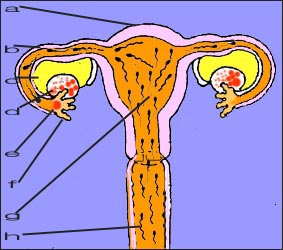

- 남성 불임증과 임신 시도
- 남성 불임이 있으면 다음과 같이 임신을 시도한다
- 여성 불임증과 임신 시도
- 여성 불임이 있으면 다음과 같이 임신을 시도한다.
Copyright ⓒ 2014 John Sangwon Lee, MD., FAAP
Infertility and trying to get pregnant 불임증과 임신 시도
Married men and women before the age of 35 are defined as infertility if they normally have the opposite sex and do not become pregnant even if they try to conceive for at least one year.
About 10% to 20% of couples can become infertile, and the older they are, the more likely they are to become infertile. 40% of all causes of infertility are on the female side, 40% on the male side, about 10% on both male and female sides, and the remaining 10% are unknown.
Infertility that has never been conceived is called primary infertility (primary infertility), and if a woman who has previously conceived tries to conceive again and does not become pregnant, it is called secondary infertility.
Infertility may be deliberately attempted for personal problems, infertility may be attempted for political, economic, social or religious reasons, and infertility may result from stress, illness, or harmful substances.
For this reason, the exact rate of infertility is not known for certain.

Longitudinal section of the female genitalia a-fallopian tubes, b-fallopian tubes, c-rectum, d-uterus, e-ovaries, f-bladder, g-vagina, h-urethra
![]()

Female genitals after intercourse a-finger, b-fallopian tube, c-perspective, d-ovary, e-ovum, f-fallopian tube, g-uterine cavity, h-sperm in vagina
![]()
When pathogen infections such as Chlamydia or Hulpus virus (herpes virus) occur in the internal and external reproductive systems, especially when infected with the fallopian tubes, they are susceptible to infertility. Any type of medication can lead to infertility.
Problems with the male genitalia can lead to infertility, and problems with the female genitals can lead to infertility.
The ovaries are present, but the ovaries cannot produce eggs, Even if an egg is produced in the ovary, the egg and sperm cannot meet each other due to an abnormality in the fallopian tube or the fallopian tube of a woman,
After the egg and sperm meet in the fallopian tube and are fertilized, the fertilized egg is not implanted on the inner wall of the uterus due to an abnormality in the uterus or an abnormality in the inner wall of the uterus, Infertility can occur even when the uterus, fallopian tubes, or vaginal parts are not congenital or acquired for any reason. In the case of men, the number of sperm is abnormally small or the activity of sperm is abnormal even if there are no testes or the vas deferens due to various reasons due to congenital or acquired testes, or even if there are testes, sperm cannot be produced normally.
Fewer or more strange-looking sperm can lead to infertility.
Although sperm is normally produced and female eggs are produced normally if there is a sperm antibody secreted from the cervix of a woman, an antigenic antibody reaction occurs to the sperm, and the sperm cannot enter the uterus normally to meet the egg, resulting in infertility. Infertility can be caused by a number of other causes.
The causes, diagnosis, and pregnancy attempts of male and female infertility are described in detail below.
Male infertility and pregnancy attempts If you have male infertility, try to get pregnant by: Female infertility and pregnancy attempts If you have female infertility, try to conceive as follows: Copyright ⓒ 2014 John Sangwon Lee, MD., FAAP
“부모도 반의사가 되어야 한다”-본 사이트의 내용은 여러분들의 의사로부터 얻은 정보와 진료를 대신할 수 없습니다.
“The information contained in this publication should not be used as a substitute for the medical care and advice of your doctor. There may be variations in treatment that your doctor may recommend based on individual facts and circumstances.
“Parental education is the best medicine.“